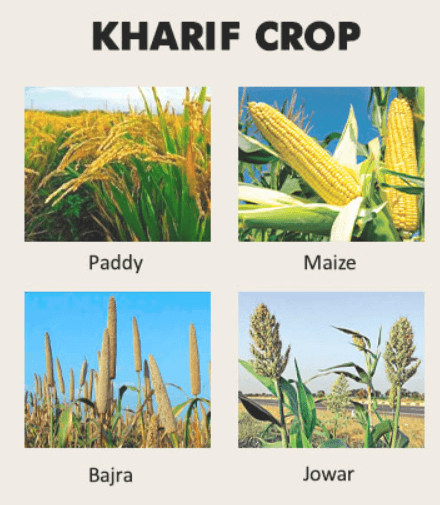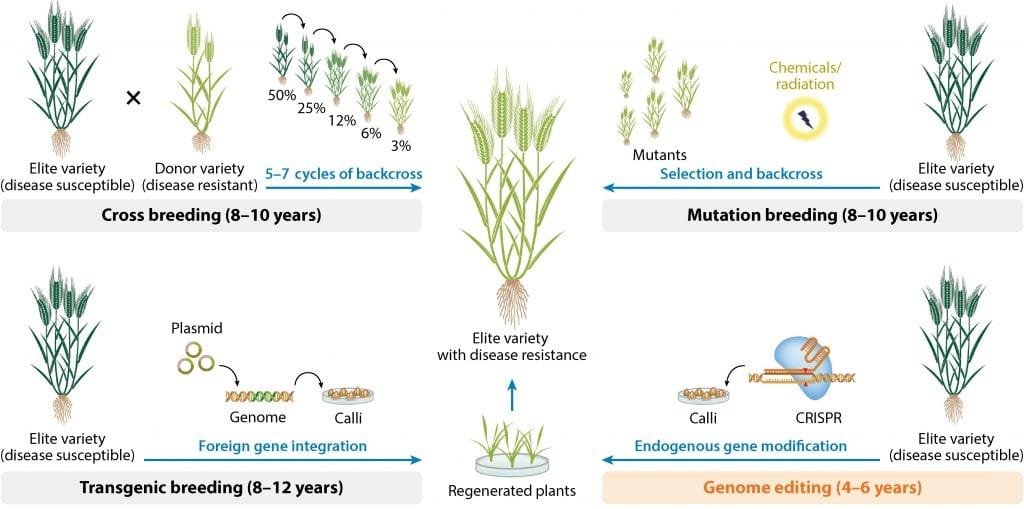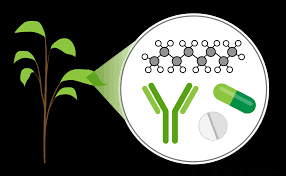Introduction to Kharif Crops and Their Importance

Kharif crops are those that are sown at the beginning of the rainy season and harvested at the end of monsoon, typically from June to October in India. These crops rely heavily on rainfall and warm temperatures, and they play a vital role in the agrarian economy of many tropical and subtropical countries. Major Kharif crops include rice, maize, sorghum (jowar), pearl millet (bajra), cotton, groundnut, soybean, and pulses like pigeon pea and urad. Crop improvement in Kharif crops is essential for ensuring food security, improving farm income, and addressing challenges like climate change, pest resistance, and soil degradation.
Summary of Kharif Crops
- Kharif crop improvement combines breeding, biotechnology, and modern agronomy to boost yields and resilience under variable monsoon conditions.
- Techniques like hybridization, molecular breeding, and genome editing have produced drought-, flood-, and pest-tolerant varieties of rice, maize, millet, cotton, and pulses.
- Institutional support, climate-smart farming, and inclusive access to seeds and training are essential for sustainable gains in farmers’ productivity and incomes.
Table of Contents
Objectives of Crop Improvement in Kharif Season
The key goals of crop improvement in Kharif crops are to increase yield, enhance resistance to pests and diseases, improve tolerance to abiotic stresses such as drought and flooding, enhance nutritional value, and improve post-harvest qualities. These objectives are achieved through a combination of traditional breeding techniques, modern biotechnology, and improved agronomic practices. Increasing productivity per unit area is crucial due to the limited land resources and growing population.
Major Techniques Used in Kharif Crop Improvement
Conventional Breeding

Conventional breeding involves selecting parent plants with desirable traits and cross-breeding them to produce offspring with improved characteristics. In crops like rice and maize, hybridization has played a significant role in boosting yield. Selection and mass breeding are also used to retain the best-performing varieties over generations. This approach, although time-consuming, remains the backbone of crop improvement programs.
Mutation Breeding
Mutation breeding involves exposing seeds to chemicals or radiation to induce genetic changes. These mutations can lead to beneficial traits like disease resistance or better grain quality. Several improved varieties of rice and sorghum have been developed using mutation breeding.
Molecular Breeding and Marker-Assisted Selection
Molecular breeding uses DNA markers to track the inheritance of specific genes during plant breeding. Marker-assisted selection (MAS) allows for the early identification of plants with desired traits, speeding up the breeding process. This is especially useful in complex traits like drought tolerance or pest resistance. In rice, MAS has been used to incorporate genes for submergence tolerance (SUB1 gene) and bacterial blight resistance.
Genetic Engineering and Biotechnology
Genetic engineering allows the insertion of specific genes from one organism into another to introduce new traits. Genetically modified (GM) crops like Bt cotton have revolutionized pest management by incorporating genes from Bacillus thuringiensis to resist bollworm. Although not yet widely adopted in food crops in India, transgenic research in rice and maize is ongoing to improve traits like vitamin content, insect resistance, and stress tolerance.
Genome Editing (CRISPR-Cas9)

CRISPR-Cas9 is a modern genome editing tool that allows precise modification of genes without introducing foreign DNA. This technique holds promise for developing improved Kharif crop varieties with higher yield and better stress tolerance without some of the regulatory hurdles associated with GMOs.
Improvement in Major Kharif Crops
Rice (Oryza sativa)
Rice is the most important Kharif crop in Asia. Crop improvement in rice has focused on high-yielding varieties (HYVs), pest and disease resistance, flood and drought tolerance, and improved grain quality. Varieties like IR64 and Swarna Sub1 are known for their resilience. Hybrid rice technology has also contributed to yield increases, especially in water-scarce areas. Biofortified rice with higher zinc and iron content is under development to address micronutrient deficiencies.
Maize (Zea mays)
Maize improvement has centered on hybrid development, pest resistance, and drought tolerance. Quality Protein Maize (QPM) is one such variety rich in lysine and tryptophan, which are essential amino acids. Research has also produced heat-tolerant and short-duration maize hybrids suitable for changing climatic conditions.
Sorghum (Jowar)
Sorghum is a drought-tolerant crop grown in semi-arid regions. Breeding programs have developed varieties that mature quickly and resist grain mold, shoot fly, and stem borer. Efforts are also underway to improve its nutritional profile, especially for iron and zinc.
Pearl Millet (Bajra)
Pearl millet improvement focuses on drought resistance, early maturity, and disease tolerance. Hybrid bajra has shown considerable success in enhancing yields. Nutrient-rich varieties with higher iron and zinc content are also being promoted to tackle malnutrition.
Cotton
Bt cotton has been the most successful GM crop in India, offering effective resistance against bollworm and reducing the need for pesticide use. Crop improvement in cotton also involves improving fiber quality, tolerance to drought and salinity, and resistance to sucking pests like aphids and whiteflies.
Pulses (Pigeon Pea, Urd, Moong)
Kharif pulses are crucial for protein security. Crop improvement efforts target early maturity, drought resistance, and resistance to Fusarium wilt and pod borer. Hybrid pigeon pea has shown promising results in improving productivity.
Oilseeds (Groundnut, Soybean)
Improved groundnut varieties with resistance to leaf spot disease and drought have been developed. In soybean, efforts are made to improve oil quality, yield, and resistance to rust and root rot. Short-duration varieties allow better crop rotation and use of residual soil moisture.
Abiotic Stress Tolerance in Kharif Crops
Drought Tolerance
Many Kharif crops face drought due to erratic monsoon rainfall. Breeding for drought tolerance involves selecting varieties with deep root systems, efficient water use, and early maturity. Sorghum and pearl millet are naturally drought-tolerant, and further improvements are enhancing their performance under dry conditions.
Flood and Submergence Tolerance
In flood-prone areas, submergence-tolerant varieties like Swarna Sub1 in rice can survive prolonged waterlogging. These varieties are crucial for stabilizing yields in regions with unpredictable rainfall.
Heat Tolerance
Rising temperatures can affect flowering and grain filling in crops like maize and rice. Heat-tolerant varieties that maintain pollen viability and grain quality are being developed through molecular breeding and field selection.
Salinity and Soil Stress Management
Salinity-affected soils are a challenge in coastal and irrigated areas. Salt-tolerant rice varieties like CSR-30 and salt-tolerant cotton hybrids are being promoted. Soil amendments and better irrigation practices also complement genetic improvements.
Integrated Crop Management (ICM) in Kharif Crops
Improved Agronomic Practices
ICM involves the use of improved seed varieties, balanced fertilization, pest management, irrigation, and mechanization. Practices such as line sowing, zero tillage, and the use of organic manures are encouraged to improve productivity and sustainability.
Pest and Disease Management
Integrated Pest Management (IPM) combines biological control, cultural practices, and judicious pesticide use to reduce pest damage. In Kharif crops, timely sowing, resistant varieties, and trap cropping are used to control pests like stem borer and bollworm.
Use of ICT and Precision Farming
Digital tools and precision farming techniques like remote sensing, drones, and GPS-based nutrient management are being introduced in Kharif crop cultivation. Mobile apps and advisory services help farmers make timely decisions for crop improvement.
Role of Institutions and Policy Support
Research Institutions
Organizations like the Indian Council of Agricultural Research (ICAR), International Rice Research Institute (IRRI), and national agricultural universities play a vital role in developing improved varieties and providing extension services. Collaborative research has accelerated the development of climate-resilient Kharif crops.
Government Schemes and Support
Schemes like Rashtriya Krishi Vikas Yojana (RKVY), National Food Security Mission (NFSM), and Pradhan Mantri Krishi Sinchayee Yojana (PMKSY) support crop improvement through subsidies, training, and infrastructure. The promotion of Farmer Producer Organizations (FPOs) and public-private partnerships also facilitates the adoption of improved technologies.
Socio-Economic Impact of Crop Improvement
Crop improvement in Kharif crops has contributed to increased yields, better incomes for farmers, and enhanced food and nutritional security. For example, the adoption of Bt cotton has significantly increased productivity and reduced pesticide use. Improved rice and pulse varieties have helped in doubling farmers’ income in several regions. However, equitable access to quality seeds, credit, and training remains a challenge.
Challenges and Future Prospects
Despite the progress, crop improvement in Kharif crops faces several hurdles, such as climate change, declining soil health, water scarcity, pest resurgence, and resistance to GM technology. Future strategies should focus on developing region-specific varieties, integrating traditional knowledge with modern science, and promoting sustainable practices. Climate-smart agriculture, resilient seed systems, and inclusive policies will be key to ensuring the continued success of Kharif crop improvement.
Conclusion
Crop improvement in Kharif crops is a multidimensional strategy designed to enhance yield, resilience, quality, and sustainability in rainfed farming systems that rely on monsoonal rainfall. Through an integrated approach combining conventional breeding, mutation breeding, molecular techniques such as marker-assisted selection and CRISPR-Cas9, and biotechnology (such as Bt cotton and biofortified rice), scientists and farmers together address challenges like drought, flooding, heat, salinity, pests, and disease. Crops such as rice, maize, sorghum, pearl millet, cotton, pulses, and oilseeds have benefited from this intensive effort, resulting in varieties that mature faster, resist biotic and abiotic stresses, and possess improved nutritional traits like higher iron, zinc, or essential amino acids.
Moreover, implementing improved agronomy and integrated crop management—such as zero tillage, precise fertilization, pest forecasting, and ICT-enabled advisory services—ensures that modern varieties deliver their full potential on the field. Institutional support through research networks like ICAR and IRRI, alongside government schemes such as NFSM and PMKSY, equips farmers with access to quality seeds, training, irrigation, and financial incentives, which catalyze adoption at scale. Economically, these advancements have driven higher productivity and profitability; for example, hybrid and Bt cotton varieties have substantially increased yields and reduced pesticide dependence, while modern rice and pulse varieties have doubled incomes for many smallholder farmers.
Looking ahead, crop improvement must increasingly emphasize climate-resilient varieties, sustainable practices, equitable seed systems, and regulatory frameworks that balance innovation with biosafety. By merging traditional knowledge with cutting-edge genomic tools and fostering farmer–researcher partnerships, Kharif agriculture can adapt to uncertainties in the monsoon, safeguard food security, and support rural livelihoods. Ensuring inclusive access to improved germplasm, technology, and markets will be vital to sustaining the gains realized so far and advancing toward a resilient and sustainable future for rainfed farming communities.
Frequently Asked Questions (FAQs)
What are Kharif crops and why are they important?
Kharif crops are monsoon-season crops such as rice, maize, millets, pulses, cotton, and soybeans grown during June–October; they are vital for food security and rural livelihoods in tropical regions.
What is the role of climate-smart agriculture in Kharif farming?
Climate-smart agriculture integrates drought-tolerant seeds, efficient irrigation (like drip and zero tillage), and crop rotation to enhance resilience under changing monsoon patterns .
How does marker-assisted breeding improve Kharif crops?
Marker-assisted selection uses DNA markers to track genes for traits like drought or disease tolerance, speeding up breeding by identifying better plants early .
Related Articles

